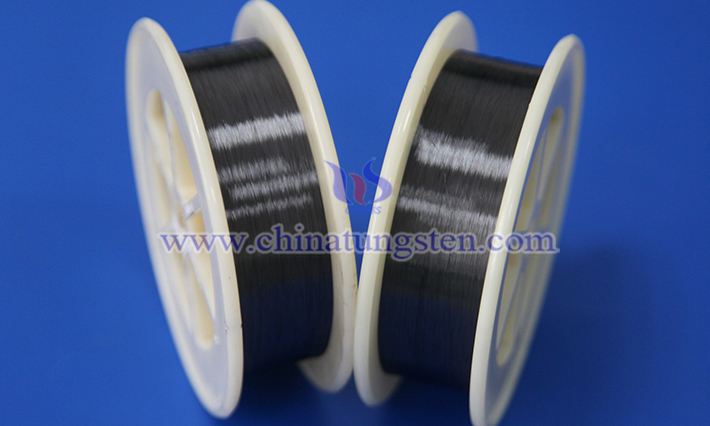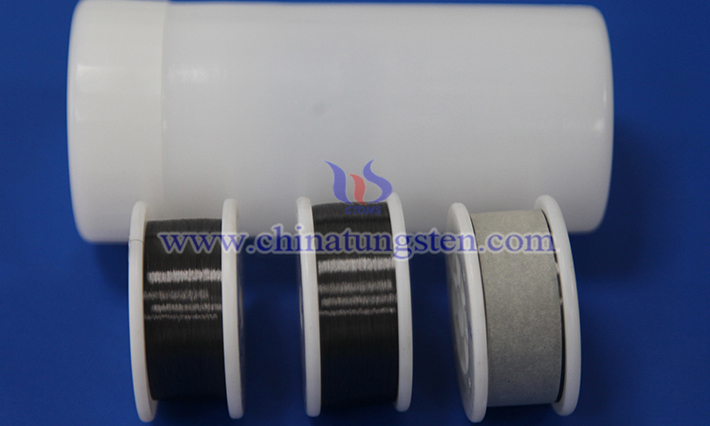Chemical Protection Capability of Cut-resistant Tungsten Wire
- Details
- Category: Tungsten Information
- Published on Tuesday, 08 April 2025 19:36
The chemical protection capability of cut-resistant tungsten wire is primarily manifested in its outstanding corrosion resistance, oxidation resistance, and stability in extreme chemical environments. The following is an introduction from multiple aspects:
1. Corrosion Resistance
Resistance to Acid and Alkali Corrosion: Cut-resistant tungsten wire exhibits good corrosion resistance to most acids (such as hydrochloric acid, sulfuric acid, and nitric acid) and alkalis (such as sodium hydroxide) at room temperature. Its high chemical stability makes it less prone to chemical reactions in strong acid and alkali environments, thereby maintaining structural integrity.
Resistance to Halogen Corrosion: At room temperature, tungsten wire demonstrates high resistance to corrosion by halogens (such as fluorine, chlorine, and bromine). However, under high-temperature conditions, tungsten wire reacts with halogens to form corresponding halides, necessitating cautious use in high-temperature environments containing halogens.

2. Oxidation Resistance
Room Temperature Oxidation Resistance: In a dry environment at room temperature, a dense oxide film forms on the surface of cut-resistant tungsten wire. This film protects the internal tungsten from further oxidation, showcasing excellent oxidation resistance.
High Temperature Oxidation Resistance: At high temperatures, the oxide film on the surface of tungsten wire decomposes, and the wire reacts with oxygen to form tungsten trioxide (WO₃). Despite this, tungsten wire still exhibits superior oxidation resistance compared to many other metals at high temperatures, making it suitable for use in high-temperature environments.
3. Resistance to Corrosion by Reducing Gases
Cut-resistant tungsten wire may experience slight hydrogen embrittlement in reducing atmospheres (such as hydrogen), leading to a decrease in toughness. Therefore, when used in environments containing reducing gases like hydrogen, it is necessary to control gas concentration and temperature to prevent the occurrence of hydrogen embrittlement.
4. Resistance to Carburization and Nitridation
Carburization: At high temperatures, tungsten wire can react with carbon to form tungsten carbide (WC), an extremely hard compound commonly used in the manufacture of wear-resistant cutting tools.
Nitridation: Tungsten wire can react with nitrogen gas at high temperatures to form tungsten nitride (WN), further enhancing its hardness and wear resistance.

5. Stress Corrosion Resistance
High-purity tungsten wire demonstrates strong resistance to stress corrosion in corrosive media such as chlorides and sulfides, but impurities (such as iron and nickel) can significantly reduce its performance. Therefore, the purity of industrial-grade tungsten wire typically needs to be higher than 99.95%, with impurity content strictly controlled below 0.01% to prevent intergranular corrosion or embrittlement.
6. High-Temperature Chemical Stability
In inert gas (such as argon) or vacuum environments, cut-resistant tungsten wire exhibits excellent high-temperature stability, enabling it to maintain chemical stability and mechanical performance under extreme high temperatures.
7. Chemical Protection in Applications
Protective Equipment: The high hardness, high strength, and corrosion resistance of tungsten wire make it an ideal material for manufacturing protective equipment such as cut-resistant gloves and bulletproof vests, effectively resisting cutting and chemical corrosion from sharp objects such as knives and glass fragments.
Industrial Applications: In fields such as high-temperature cutting tools, electronics industry, and aerospace, the chemical protection capability of tungsten wire enables it to maintain stable performance in extreme chemical and high-temperature environments.
8. Testing Standards
Corrosion Resistance Testing: ASTM G48 (Pitting Corrosion Test), ISO 9227 (Salt Spray Test).
High Temperature Oxidation Testing: ASTM G54 (High Temperature Oxidation Rate Determination).
- Chinatungsten Online: www.tungsten.com.cn
- CTIA GROUP LTD: en.ctia.group
- Tungsten News & Price: www.ctia.com.cn
- Molybdenum News & Price: news.molybdenum.com.cn
- Tel.: 86 592 5129696; Email: sales@chinatungsten.com